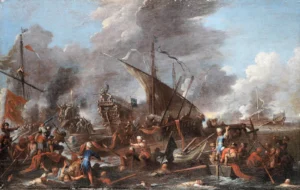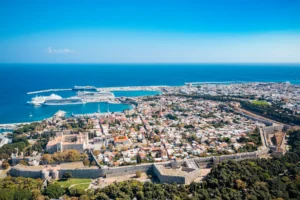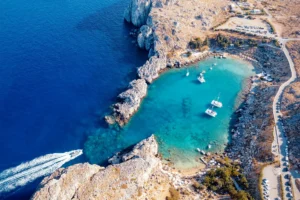
August 15: Religious holiday is the perfect excuse for Greece to throw a grand party

Religious festivals and saints’ days in Greece are always a big deal. They bring families together – the younger members of which are often named after their elder relatives – reinforce the bonds of local communities, resuscitate age-old traditions, and buttress the people’s faith. They can also serve as excellent occasions for matchmaking and even for settling old scores – many a local festival degenerates into a brawl that is later settled amicably over food and even more wine. Every saint is revered, but none as gloriously as the Virgin Mary, or Panaghia (All-Saintly), is on August 15, the biggest religious event in Greece after Easter and Christmas, a national holiday that is observed by the civil service and private sector.
August 15, or Dekapentavgoustos, commemorates the Dormition (in some traditions the Ascension or Assumption) of the Virgin. For Greeks, the Panaghia is the mother of all men, a source of protection and comfort. To mainlanders, she is mother earth and to islanders, she is mother sea. To this day, she is revered and invoked and asked to perform miracles from the most mundane to the most awesome. Every city, town, village, and hamlet around the country has a church or chapel dedicated to the Panaghia and in most, she is given a last name indicating either the miracles she is expected to perform or the graces she is endowed with: Panaghia the Healer, the Merciful, the Graceful, the Sweet-Talking, the Savior of Souls, the Mistress of the Angels, the Philanthropist… And on August 15, they throw her a party.
The celebration of the Dormition of the Virgin is presided over by the Greek Orthodox Church’s holiest cathedral, the Panaghia Evangelistria on Tinos. Pilgrims flock by the thousands to this Cycladic island each year, crawling or rolling up the steep slope from the port to the imposing church at the top of a hill to offer their prayers and votive offerings (tamata), to entreat a miracle of the Panaghia. The tamata can be anything from a simple candle to intricate silver or even gold carvings in the representation of the miracle requested. On the islands, the most common tama is that of a ship, a prayer for safe passage.
The Church of Panaghia Evangelistria on Tinos is dedicated to an icon discovered in 1822 after a nun had a vision of the Virgin telling her where the icon was to be found. In some accounts, it is said that the icon was dug up in a field and, as soon as it was brought into the light, a hard protective shield like glass covered it. The men who dug it up chipped away at the shield and each who touched it was healed.
On Rhodes, the Panaghia is believed to have turned two pirate ships into stone – the two small islands that can be seen from the monastery there – to stop them from their deadly raids. On Paros, she is said to have punished the architect of the Hagia Sophia in Constantinople for envying the work of his apprentice on the island’s Panaghia Ekatondapyliani (A Thousand Gates). The master builder attempted to push the younger man off the top of the church, but the apprentice grabbed his robes and took him down with him.
Every corner of Greece has a Panaghia story, and every part of the country also holds a festival every August 15 to celebrate her. Though in many regions the traditional church fete has lost much of its charm, there are still places where old customs are kept alive. Most importantly, however, the essence of the celebration is that everyone is welcome, treated like family, wined, and dined. The formal religious ceremony is held during the day, with mass and prayers in the morning and in the evening. Each town’s icon of the Virgin is often adorned with flowers and ribbons and carried around the town or village so that the faithful may touch it. In the larger churches, such as those on Tinos and Paros, the ceremony is attended by members of the political leadership and other famous figures. On the same day, Tinos also commemorates the sinking of the warship Elli in 1940 by Italian torpedoes off the island’s coast, an event that effectively brought Greece into the Second World War.
In Siatista, in the northern Greek prefecture of Kozani, the local men ride their beautifully adorned horses up to the Monastery of the Koimissis tis Theotokou (Dormition of the Virgin). The horsemen train their horses for weeks before this event and, later in the day, they put on a display of their skills in the town’s main square. Also preserving their traditions, the Black Sea Greeks of Soumela in Veria don full costumes on their annual pilgrimage to the Panaghia Soumela Monastery. The fete is more boisterous on the island of Serifos, where young men get into fistfights to win the attention of young women. According to local lore, the man who comes out triumphant and gets to dance with his beloved under the old olive tree is sure to win her hand in marriage.
What is certain is that wherever you are in Greece on this national holiday, there will be a panigiri somewhere nearby. Ask any local and they will be able to tell you where and what time it will be taking place.


